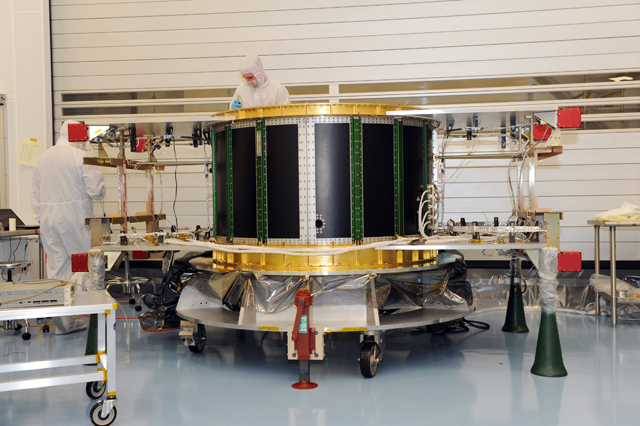During the past weeks we have heard about asteroid 1998 QE2 and how it has got closer than any other asteroid to Earth. Whether or not it poses any dangers to us or not (well, it does not). In fact, the closest approach of this asteroid to Earth occurs tomorrow, May 31, 4:59 pm Eastern Time, "when the asteroid will get no closer than about 3.6 million miles (5.8 million kilometers), or about 15 times the distance between Earth and the moon". As eyes were on this asteroid to capture this approach, NASA scientists discovered that QE2 has its own moon! Radar data of NASA's Goldstone Deep Space antenna in California were used for this finding. Images were taken from "3.75 million miles (6 million kilometers) from Earth, which is 15.6 lunar distances." To learn more read here.
Yet, I wonder, where is my moon? I mean Vesta's moon?
Reference:
http://www.nasa.gov/mission_pages/asteroids/news/asteroid20130530.html
Thursday, May 30, 2013
Wednesday, May 15, 2013
Magnetospheric Multiscale Mission
Designing, building, launching, and operating a spacecraft is hard and detailed enough, requiring many hours of manpower at every stage. Recently, there have been missions that launched two spacecrafts to work together to achieve mission goals. Stereo for studying the Sun and GRAIL for studying the moon are examples of such missions. It seems like we have built so much confidence and got bold enough to try a mission with 4 spacecrafts: Magnetospheric Multiscale (MMS) Mission.
MMS will do something unique: it studies how the Earth's and Sun's magnetic fields connect and disconnect, and as a result transfer energy to Earth and other planets in a process called reconnection. MMS uses 4 identical spacecrafts spaced in Earth's orbit, to obtain 3-dimensional data of the magnetospheric boundary to study this process. MMS uses the Earth's magnetosphere as a natural laboratory that can be directly studied.
MMS is being built in NASA Goddard Space Flight Center and is currently scheduled to launch in October 2014. The mission is similar to ESA's Cluster mission with more spatial and temporal resolution, allowing to study the electron diffusion region.
References:
[1] Magnetospheric Multiscale (MMS) Mission.
[2] http://www.nasa.gov/centers/goddard/news/topstory/2009/mms_magnetic.html
[3] http://mms.gsfc.nasa.gov/about_mms.html
[4] http://en.wikipedia.org/wiki/Magnetospheric_Multiscale_Mission
[5] http://en.wikipedia.org/wiki/Cluster_mission
Photo Credit: NASA, http://mms.gsfc.nasa.gov/observatory_integration/obs3/obs3_08.html
MMS will do something unique: it studies how the Earth's and Sun's magnetic fields connect and disconnect, and as a result transfer energy to Earth and other planets in a process called reconnection. MMS uses 4 identical spacecrafts spaced in Earth's orbit, to obtain 3-dimensional data of the magnetospheric boundary to study this process. MMS uses the Earth's magnetosphere as a natural laboratory that can be directly studied.
MMS is being built in NASA Goddard Space Flight Center and is currently scheduled to launch in October 2014. The mission is similar to ESA's Cluster mission with more spatial and temporal resolution, allowing to study the electron diffusion region.
References:
[1] Magnetospheric Multiscale (MMS) Mission.
[2] http://www.nasa.gov/centers/goddard/news/topstory/2009/mms_magnetic.html
[3] http://mms.gsfc.nasa.gov/about_mms.html
[4] http://en.wikipedia.org/wiki/Magnetospheric_Multiscale_Mission
[5] http://en.wikipedia.org/wiki/Cluster_mission
Subscribe to:
Posts (Atom)

